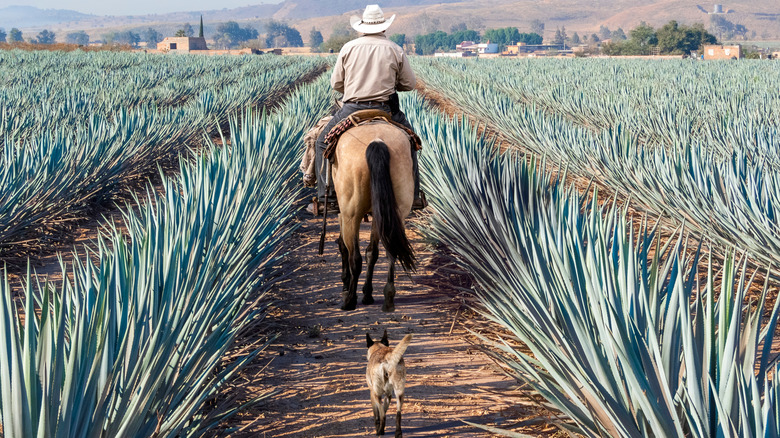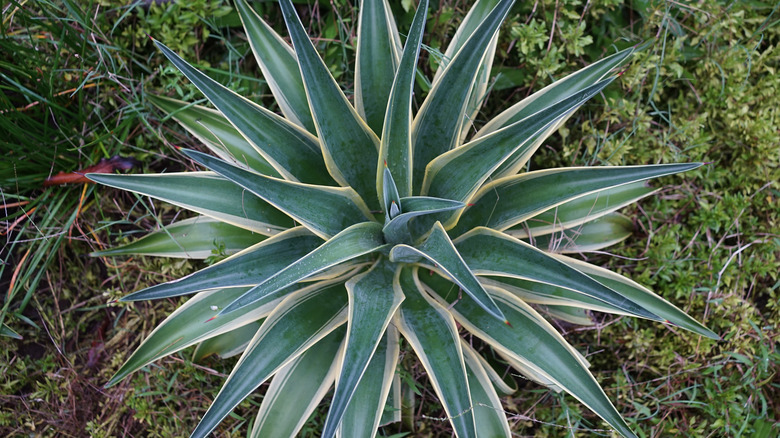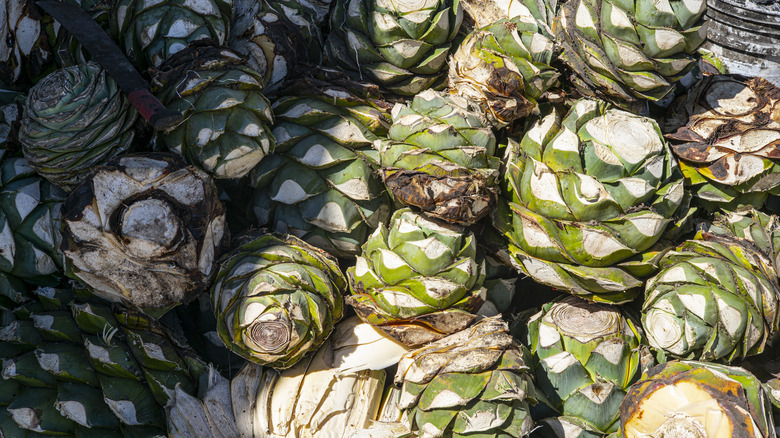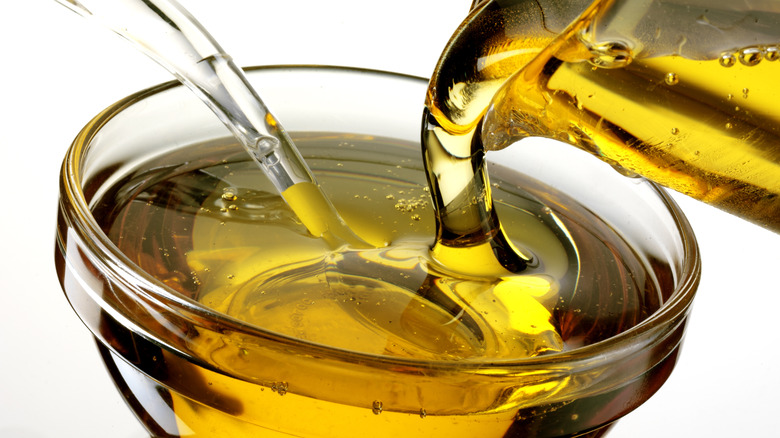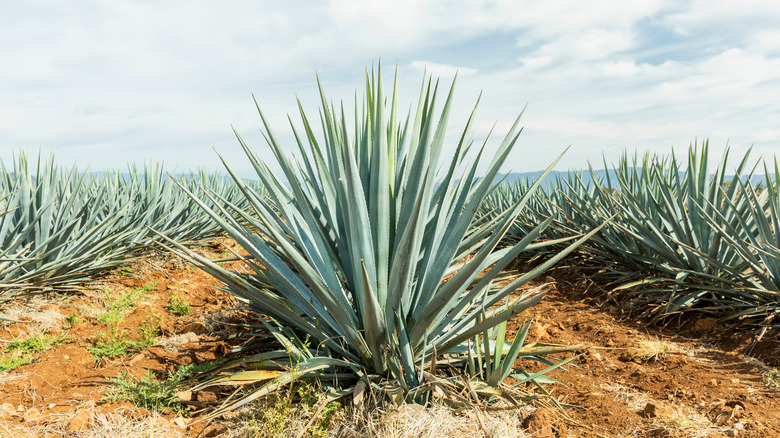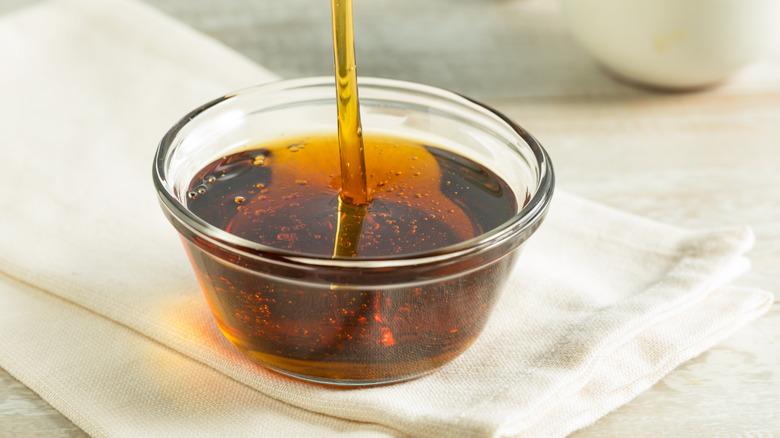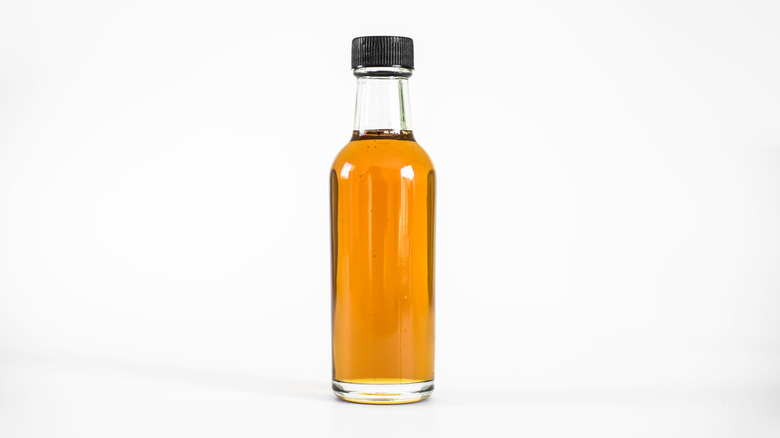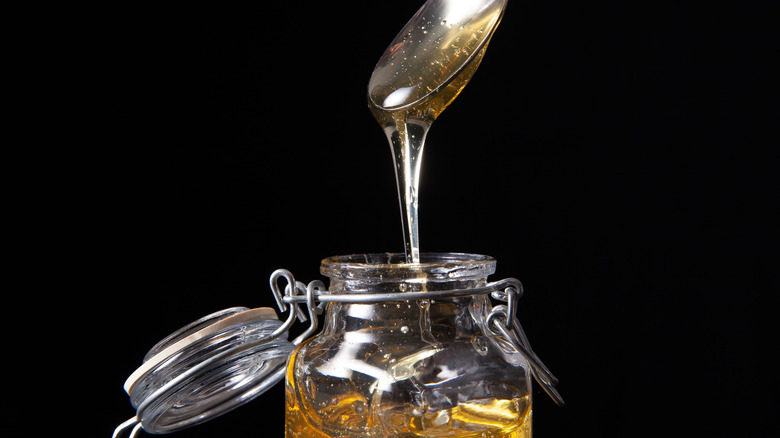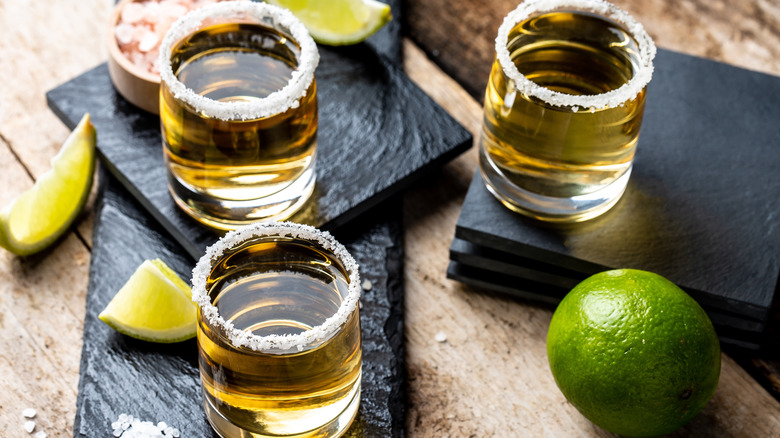What Is Agave And Can You Eat It?
It's impossible to miss the agave plants while driving through the countryside in the Mexican state of Jalisco. Under the hot Jalisco sun, rows and rows of agave are grown, cultivated, and processed into food products and used to make drinks like tequila and mezcal (via JSTOR Daily). You can see the plantations from the highway as neverending rows of agave spikes. The agave industry is thriving and products made with the plant are more popular than ever before, so much so that some growers are struggling to keep up with demand, NPR notes.
Blue agave (agave tequilana) and green maguey (agave salmiana) are the two species of the agave plant most commonly used in food products. Many of us use a syrupy substance called agave nectar as an alternative to sugar or other artificial sweeteners, or utilize parts of the plant in different dishes. But what exactly is agave, how is it turned into the products we know and love, and what does it taste like? It's a food with a long history that will no doubt remain a large part of diets across the country and beyond.
What is agave?
Agave is easy to identify by its distinct appearance: lines of prickly plants in the desert whose stalks reach like pointed fingers to the sky. The nectar that we love to add as a natural sweetener originates inside of these distinct stalks.
Agave is a succulent in the lily (amaryllis) family that naturally grows in warm and dry climates (via The Tierra Group). It is native to some parts of Texas and Mexico, where it is mostly cultivated in the state of Jalisco. While there are over 200 individual species of agave that have been developed for use in industry and gardening, Blue Agave and Maguey are the species most commonly used for food and drink, per Plant Care Today.
Indigenous Mexican cultures have used agave nectar for thousands of years, from boiling its sap to create the traditional sweetener miel de agave to fermenting it to create alcoholic beverages (via Healthline). It has also been used for centuries in Mexico as a medicinal substance to treat skin irritation, bug bites, open wounds, and menstrual problems (via Inside Herb Gardens).
As processes were further developed to turn the nectar into sweeteners and tequila, agave grew in popularity across the world. Now, agave syrup is widely used as a sweetener alternative to regular sugar.
How is agave made?
The process behind the agave nectar we use to sweeten our dishes starts many years before the delicious syrup enters our mouths or even our grocery stores. The plant is cultivated and grown for 7-10 years until the nectar inside the stalks is ready to be extracted. The stalks are strategically cut to prevent the plant from flowering. The planting process is seedless, as planting stalks that develop into independent agave plants is the preferred propagation method (via The Tierra Group). The central stalk is removed from the young agave plant, which causes the plant to grow larger and produce more fructose.
The juices inside the piña, or the pineapple-shaped core of the agave plant, are extracted (via Food Insight). The juice is pressed out and then filtered, heated to break the sugars down into fructose, and concentrated into a syrup. This processed syrup is then packaged and sold as sweet agave nectar.
Agave syrup vs. agave powder
The most common form of agave is syrupy nectar, but there are other types of agave as well. The sweetener can also be produced as Agave Inulin Powder. Inulin is a prebiotic extracted from the plant's piña. The soluble fiber has many health benefits, including immune system strength, gut bacteria benefits, blood sugar stabilization, and lower cholesterol (via Nectave).
The powder is produced by removing all the liquid from the fluid extracted from the agave plant. This dried substance is then ground into a fine powder. The powder is popular for its easy solubility in liquids at any temperature and is a great sweetener for any drink. The powder is also a great option for baking, jam and jelly production, ice cream, or any instance when using a dry sweetener is more typical. Agave syrup and agave powder taste the same, with no noticeable differences when used.
With either agave syrup or agave powder to choose from, all of your sweetener needs are covered.
What does agave taste like?
Agave is very sweet. The Tierra Group notes it's almost two times as sweet as normal table sugar, so less of it should be used when swapping it for sugar. The syrup is very thin and dissolves very easily into other liquids. Its sweetness comes from high levels of fructose, which results in a flavor devoid of the bitter or chemical aftertaste that accompanies artificial sweeteners (via Food Insight). It tastes light and nectar-like in your mouth.
Agave is most commonly compared to honey and maple syrup. It tastes and feels a bit like both of these substances, but without complex undertones and aftertastes. The sweet flavor and syrupy consistency are where the similarity to those sweeteners end. Agave has a more mild flavor that will simply add sugary sweetness to your dish. Without any conflicting tastes, it won't complicate the food it has been added to, which is why it is such an effective replacement for sugar or honey.
How to cook with agave
It's most common to use the syrup or powder extracted from the agave plant as a sweetener to replace traditional table sugar. Any time you are replacing sugar with agave, it is important to use half the amount, because agave is more concentrated and sweeter.
Several parts of the agave plant are edible as well. The flowers and leaves of the agave plant may be roasted or boiled — the leaves have a "caramel-like" flavor, according to Inside Herb Gardens. When cooking the flowers, which Inside Herb Gardens says pair well with eggs, be sure to remove the pollen stems beforehand, as they have a bitter flavor.
Masa Americana describes how the leaves of the green maguey plant are traditionally used to make a dish called mixiote. The outer layer of the leaves is removed to create a translucent sheet, which is then wrapped around food and cooked in a barbecue or underground oven, similar to the French technique of cooking food in parchment paper. The leaves create a mild flavor and contain the food while cooking.
Where to buy agave
Whether you've never tried agave and want to use it for the first time or have loved using it as a sweetener for years, you're in luck because agave is widely available in the United States. It can be found in your local grocery store in the baking section with other sweeteners and sugar substitutes. It may also be in the natural foods section of the grocery store, the cocktail mix and ingredient section, or the condiment and seasoning aisle.
When buying agave syrup, you don't need to consider anything specific. It comes in a bottle that is ready to use to sweeten beverages and foods. Some American grocery stores even have an in-house brand of agave syrup.
Agave powder is a little less common than syrup, but will likely also be in the baking, natural foods, cocktail, or condiment section. If the store has agave powder, it's usually right next to the syrup on the shelf. If not, you can always order it online.
Nutritional information about agave
Agave is often touted as a healthy alternative to sugars, a great vegan substitute for honey, and a good sweetener for people with diabetes. This is all technically true, but with a few disclaimers.
The agave plant contains healthy fiber, including fructans that have benefits for glucose metabolism, body weight and fat mass development (via British Journal of Nutrition). However, Healthline notes these fuctans are changed into fructose in the nectar production process and not present in contemporary agave syrup.
Because agave is so much sweeter than sugar, less can be used to achieve the same level of sweetness. However, agave nectar is higher in calories than sugar. It is better for people with diabetes than normal sugar due to its low glycemic index, which means it won't raise your blood sugar as much as other sweeteners. Agave should still be consumed in moderation, as the high fructose levels in agave can lead to other problems and causes the liver to produce more dangerous triglycerides, per Healthline.
Overall, agave has some nutritional benefits when compared to regular sugar but it is still a fructose-filled sweetener that should be used in low amounts.
Agave's role in tequila production
Of course, we can't dive deep into the uses of agave without mentioning tequila. The alcoholic beverage is made by distilling and fermenting the liquid inside the blue agave plant. Tequila can only be produced in Mexico, with most of the agave cultivation and processing located in the state of Jalisco.
Masterclass notes that agave has been used to make fermented alcoholic beverages since the year 250, when the Aztecs made a non-distilled tequila-like beverage called pulque. Spanish colonizers modified the process and began making distilled tequila in the 1600s. The liquor has been popular ever since.
The first step towards tequila is cultivating the plant, according to Masterclass. A tool called a coa is used to cut agave stalks away from the plant core. The piña, or core of the plant, is baked at a high temperature and then shredded by a traditional stone wheel or an industrial machine. This extracts the agave juice, or mosto. The mosto is held in large wooden barrels or steel tanks with yeast and water until it ferments into ethyl alcohol. This is then distilled into tequila, and aged to perfection.
